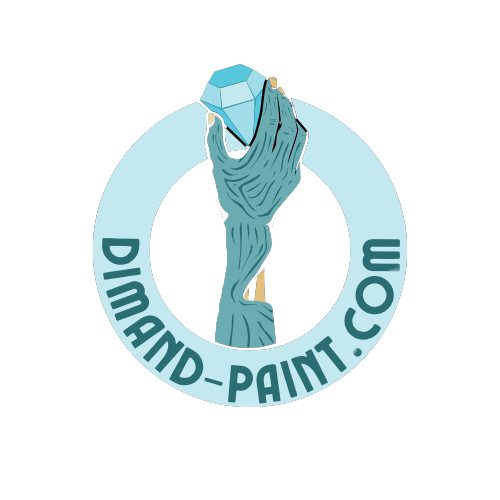How Does Diamond Painting Work?
Diamond painting is a popular craft that combines elements of paint-by-number and cross-stitch. It involves creating a dazzling work of art by placing small resin drills, often shaped like diamonds, onto a canvas. In this article, we will explore how diamond painting works, from the components involved to the techniques used, providing you with a comprehensive guide to this creative and relaxing hobby.
Components of Diamond Painting
To understand how diamond painting works, it’s essential to familiarize yourself with the various components involved. These include:
Canvas
The canvas serves as the foundation for your diamond painting. It features a printed design with symbols that correspond to different colors of drills.
Drills
Drills are small resin pieces that resemble diamonds and come in various colors. They are the building blocks of your diamond painting, adding color, shine, and sparkle to the artwork.
Wax and Tray
To facilitate the process of picking up drills, wax is used. The wax is applied to the diamond pen or applicator, allowing the drills to stick to it. The tray holds the drills, keeping them organized and easily accessible.
Diamond Pen or Applicator
The diamond pen or applicator is the tool used to pick up drills. It has a small tip coated with wax, enabling it to grab and hold the drills securely.
Process of Diamond Painting
Now that we are familiar with the components, let’s walk through the process of diamond painting step by step.
Preparing the Workspace
Before you begin, ensure you have a clean and clutter-free workspace. Lay out all the necessary tools and materials within reach.
Placing the Canvas
Place the canvas on a flat surface, such as a table or a desk, ensuring it is taut and free from wrinkles. You may secure the corners with tape or binder clips to keep it in place.
Applying Wax to the Diamond Pen
Take a small amount of wax and rub it onto the tip of the diamond pen. This will create a tacky surface that allows the drills to adhere to the pen.
Selecting a Drill Color
Refer to the symbol legend provided with the canvas to identify the color of drill you need for a particular symbol.
Picking up a Drill with the Pen
Using the diamond pen, gently press the tip onto the flat side of a drill, allowing it to stick to the wax-coated tip.
Placing the Drill on the Canvas
Align the drill with the corresponding symbol on the canvas and gently press it down. The drill should stick to the adhesive surface, creating a secure bond.
Repeating the Process
Continue selecting drills, picking them up with the pen, and placing them on the canvas, following the pattern provided. Work systematically to cover the entire canvas with drills.
Techniques and Tips for Diamond Painting
To enhance your diamond painting experience, here are some techniques and tips to keep in mind:
Working in Sections or from Top to Bottom
Consider working in small sections or starting from the top of the canvas and gradually progressing downward. This approach helps prevent accidental smudging or misalignment of drills.
Keeping the Canvas Covered
When not working on your diamond painting, keep the canvas covered with protective film or a clean cloth. This prevents dust or accidental spills from affecting the adhesive surface.
Using a Light Pad
A light pad can be a helpful tool, especially when working on intricate or detailed designs. It illuminates the canvas from beneath, making it easier to see the symbols and drill placements.
Sorting Drills
To streamline the process, consider sorting the drills by color into separate containers or using a multi-compartment tray. This organization makes it quicker to locate the desired color when needed.
Applying Gentle Pressure
When placing a drill on the canvas, apply gentle pressure to ensure it adheres securely. Avoid pressing too hard, as it may cause the canvas to warp or the drill to become misshapen.
Completion and Finishing Touches
Once you have placed all the drills and completed your diamond painting, there are a few final steps to consider:
Checking for Missing or Misaligned Drills
Inspect the entire canvas to ensure all symbols are filled with the corresponding drills. Double-check for any misaligned or incorrectly placed drills and make necessary adjustments.
Applying Pressure
To ensure the drills are securely attached, gently apply pressure to the completed canvas. You can use a rolling pin or a clean, soft cloth to apply even pressure across the surface.
Framing or Sealing the Finished Diamond Painting
For a polished look, consider framing your completed diamond painting. Alternatively, you can seal it with a clear varnish or resin to protect the drills and enhance their sparkle.
VI. Frequently Asked Questions (FAQs)
- How long does it take to complete a diamond painting?
- Can diamond paintings be customized?
- What should I do if I run out of drills?
- How do I clean a diamond painting?
- Can diamond paintings be displayed outdoors?
Conclusion
Diamond painting is a captivating craft that allows individuals to create stunning works of art with ease. By understanding the components involved and following the step-by-step process, you can immerse yourself in the world of diamond painting and unleash your creativity. So gather your tools, select a beautiful design, and embark on a mesmerizing journey of diamond painting.

